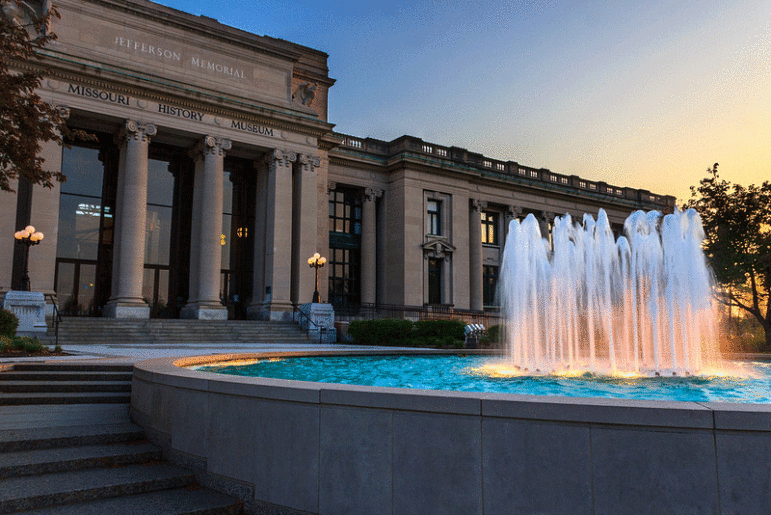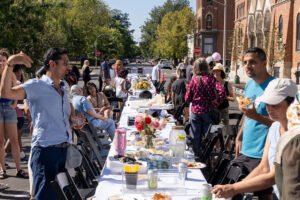
September 28, 2016; St. Louis Post-Dispatch
Nearly all material and oral facts in the case of the 2014 shooting of unarmed young African American Michael Brown by white former Ferguson, Missouri police officer Darren Wilson continue to fall under close scrutiny. The Missouri History Museum, which focuses its collection almost exclusively on the Greater St. Louis area of which Ferguson is a part, continues its efforts to piece together what they hope to be the definitive collection of artifacts related to the Brown tragedy and the attendant demonstrations (and, sadly, riots) that roiled the area in the wake of the grand jury’s refusal to indict Wilson on murder charges in November 2014.
The independent City of St. Louis, St. Louis County (the location of Ferguson), and their environs comprise one of the most segregated metropolitan areas in the United States. Many natives don’t know that there has been a controversy brewing over the presence of a Confederate Civil War memorial, standing rather quietly in one of the City’s gems, Forest Park. Perhaps not coincidentally, the History Society’s public exhibition space, the original Jefferson Memorial site, also stands prominently on Lindell Boulevard, adjacent from the grand old homes of prominent St. Louis families.
Sign up for our free newsletters
Subscribe to NPQ's newsletters to have our top stories delivered directly to your inbox.
By signing up, you agree to our privacy policy and terms of use, and to receive messages from NPQ and our partners.
President Jefferson’s complicated legacy provides an analogue to that of St. Louis: a city that’s been under three flags—or four, depending on one’s historical perspective—and has a deep, mostly hidden, legacy of segregation between the white and African American population. There exists a boundary, demarcated by Delmar Boulevard, which traditionally divides the two populations. Ferguson is in St. Louis County, which has not historically had the same divide. That racial divide developed as a product of the massive exodus of both African American and white citizens.
The expository digression presents for outsiders the current reality of the St. Louis area; wisely, the Museum, along with local universities, continues to seek the history, both material and social, surrounding Brown’s death and the subsequent unrest. Who to believe? Does one trust Ferguson, whose mayor, James Knowles III, graduated from a prestigious leadership program with an earnest and true focus on dismantling the racial segregation and injustice that typify the region for locals, or does one believe the activists who firmly believe Ferguson willingly conceals parts of the historical record regarding the horrible confrontation between Brown and Wilson?
Mayor Knowles seems earnest in his desire to make available all information regarding the tragedy, the Museum desires as unbiased a record for posterity as possible, and activists rightly highlight systemic issues plaguing the Mound City. The Museum, itself subject to recent scandal, does well in its attempt to keep a complete record of the violence in Ferguson, along with the many peaceful efforts to reunite a divided city while keeping it safe for all, for posterity. Will the City of Ferguson and those who felt called to action in the aftermath of the horror nearly two years past compromise and allow the Museum to fulfill its mission?—Joseph Goldkamp











